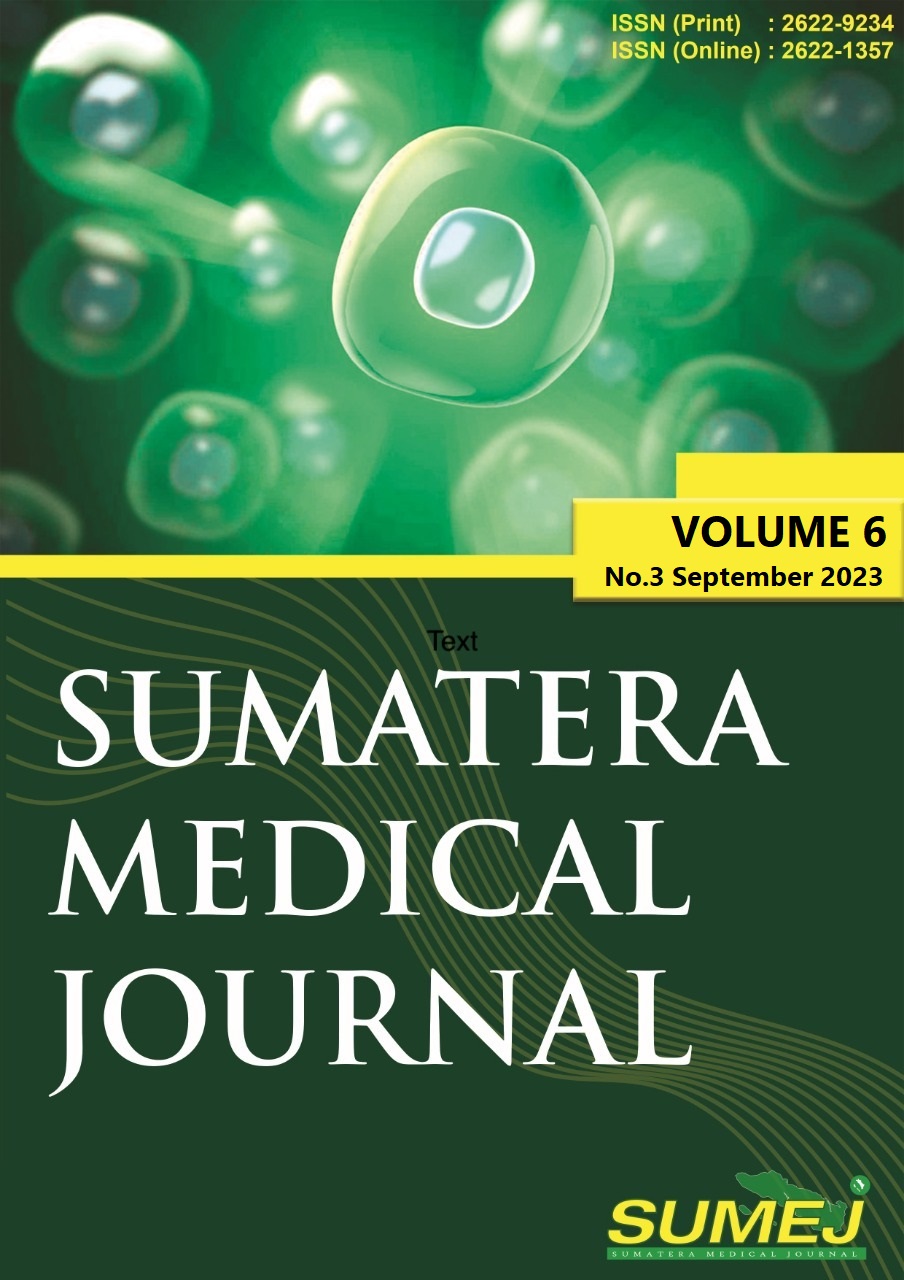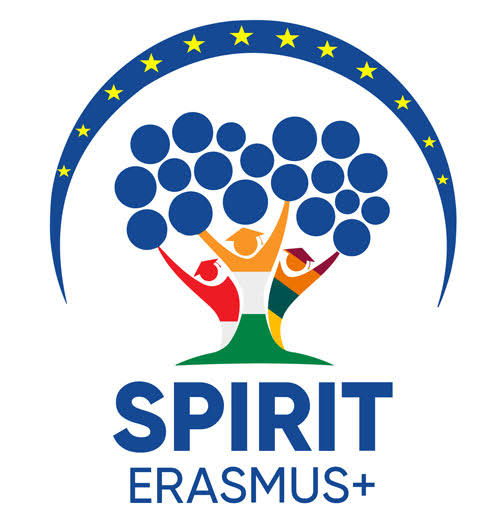Relationship of Body Mass Index with Gastroesophageal Reflux Disease Based on Gastroesophageal Reflux Disease Questionnaire Score in the Department of Highways and Construction Development of North Sumatra
DOI:
https://doi.org/10.32734/sumej.v6i3.10869Keywords:
body mass index, GERD, GERD-QAbstract
Background: Gastroesophageal Reflux Disease (GERD) is a pathological condition due to the reflux of stomach contents back into the esophagus that causing symptoms. In Indonesia, there is no clear prevalence of the incidence of GERD. Some risk factors that can cause GERD are age, sex, race, family history, economic status, increased body mass index (BMI) to obesity and smoking. BMI is the most useful and practical indicator for measuring body fat. It is known that an increased BMI can increase the risk for the occurrence of GERD. Objective: Knowing the relationship between BMI and GERD based on the GERD-Q score at the Dinas Bina Marga dan Bina Konstruksi of North Sumatra province. Methods: This research is an analatic study using cross-sectional method. Sampling using simple random sampling. The sample of this study using Gastroesophageal Reflux Disease Questionnaire (GERD-Q) for GERD diagnosis tool and measurement of weight and height to get BMI. Results: The analysis results obtained by Kendalls Tau-b correlation test and found p = 0.773 (p < 0.005). Conclusion: There was no significant relationship between BMI and GERD based on GERD-Q scores on employees of the Dinas Bina Marga dan Bina Konstruksi of North Sumatera.
Downloads
References
Makmun D. Penyakit Refluks Gastroesofageal. In: Buku Ajar Ilmu Penyakit Dalam. Jakarta: Interna Publishing; 2014. p. 1750–7.
Perkumpulan Gastroenterologi Indonesia. Revisi Konsensus Nasional Penatalaksanaan Penyakit Refluks Gastroesofageal (GERD) di Indonesia. In: Syam AF, Aula C, Renaldi K, Simadibrata M, Abdullah M, Tedjasaputra, editors. Jakarta: PGI; 2013.
Syam AF, Hapsari PF, Makmun D. The prevalence and risk factors of GERD among Indonesian medical doctors. Makara J Health Res. 2016;20(2):35–40. Available from: https://doi.org/10.7454/msk.v20i2.3495.
Bhatia S, Gupta DK, Vennalaganti P. Epidemiology of gastroesophageal reflux in Asia. In: Sharma P, editor. The Rise of Acid Reflux in Asia. India: Springer; 2017. p. 14–7. Available from: https://doi.org/10.1007/978-981-10-2160-0_2.
Sugondo S. Obesitas. In: Buku Ajar Ilmu Penyakit Dalam. Jakarta: Interna Publishing; 2014. p. 2561–70.
Emerenziani S. Gastro-esophageal reflux disease and obesity. World J Gastroenterol. 2013;19(39):6536–9. Available from: https://doi.org/10.3748/wjg.v19.i39.6536.
Tantoro AF. Association between body mass index, waist circumference and Gerd-Q scores: a cross-sectional study. Nat Sci Eng Technol J. 2021;2(1):74–7. Available from: https://journal.undiknas.ac.id/index.php/nset/article/view/2347.
Purthana NHS, Somayana G. Hubungan antara berat badan lebih dengan penyakit refluks gastroesofageal di RSUP Sanglah Denpasar periode Juli–Desember 2018. J Med Udayana. 2020;9(6):30–4. Available from: https://ojs.unud.ac.id/index.php/eum/article/view/60219.
Rabinowitz SS. Lack of correlation between obesity and gastroesophageal reflux disease (GERD) in a pediatric cohort. Open J Pediatr. 2013;3(4):317–23. Available from: https://doi.org/10.4236/ojped.2013.34057.
Taraszewska A. Risk factors for gastroesophageal reflux disease symptoms related to lifestyle and diet. Przegl Epidemiol. 2016;72(1):21–8. Available from: https://pubmed.ncbi.nlm.nih.gov/27516727/.
Nirwan JS. Global prevalence and risk factors of gastrooesophageal reflux disease (GORD): Systematic review with meta-analysis. Sci Rep. 2020;10(1):5814. Available from: https://doi.org/10.1038/s41598-020-62795-1.
Downloads
Published
How to Cite
Issue
Section
License
Copyright (c) 2023 Sumatera Medical Journal

This work is licensed under a Creative Commons Attribution-NonCommercial-NoDerivatives 4.0 International License.
The Authors submitting a manuscript do so on the understanding that if accepted for publication, copyright of the article shall be assigned to Sumatera Medical Journal (SUMEJ) and Faculty of Medicine as well as TALENTA Publisher Universitas Sumatera Utara as publisher of the journal.
Copyright encompasses exclusive rights to reproduce and deliver the article in all form and media. The reproduction of any part of this journal, its storage in databases and its transmission by any form or media, will be allowed only with a written permission from Sumatera Medical Journal (SUMEJ).
The Copyright Transfer Form can be downloaded here.
The copyright form should be signed originally and sent to the Editorial Office in the form of original mail or scanned document.











